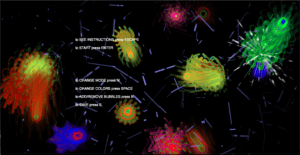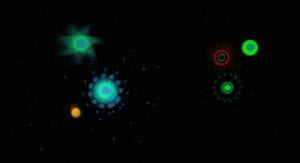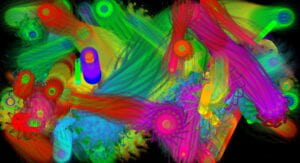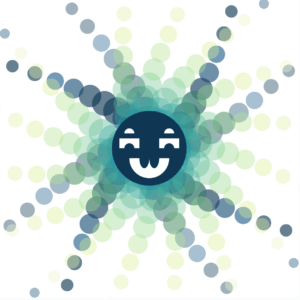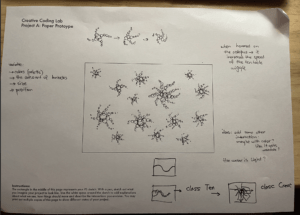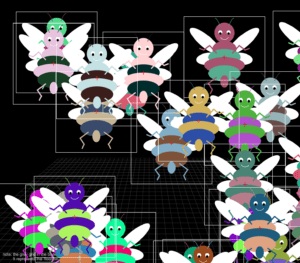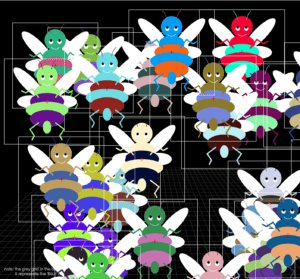My initial process is described in the “proposal” blogpost. Since then, I have went through quite a lot of changes that were both due to the development of the idea for the project as well as the interaction day feedback i have received.
Some major areas in which I have progressed were:
- the adding of the “draw” feature. i decided to include that as well as the “save” feature that can be evoked by keyboard interaction to make the project more interactive and, to some extent, interesting
- the adding of the color variety. it made the creatures look way more interesting.
- adding the lifespan: it created constant ever-changing situation that i strived for.
- the merge: the merging of the creatures when they collided was one of the most important and interesting features that i added. it was initially proposed by some of the testers.
- the sin() and cos() simplification. my professor showed me how to make my own functions (mySin() and myCos()) that utilized array in the begginning to store the values so that i can pull them out when needed instead of making the computer calculate them every time. that really aided my visualization and allowed me to display more creatures at the same time.
- the bubbles: the colors and the sizes as well as the trajectories and speed were changes countless times to achieve the balance between them being literally invisible to something that would not obscure the creatures. moreover, the explosion of bubbles when the
- the reappearing instead of bouncing. as proposed by some of the testers and my professor, i decided to change that and it actually worked faster and looked better in the “drawing” mode.
